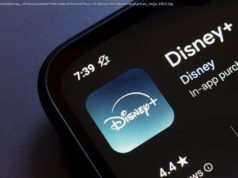The new iPhones are here and available, and they’re beautiful. Should you upgrade from the iPhone 15 Plus to the Apple iPhone 16 Plus? We found out.
It’s always hard to avoid the news that a new iPhone has arrived, and arrived they have. Apple’s September 9 event showcased four new iPhones: the iPhone 16, iPhone 16 Plus, iPhone 16 Pro, and iPhone 16 Pro Max. Chances are you know what to expect from each of those names, and the basic rule is that “more words in a name” means “bigger or more powerful,” but it’s worth keeping in mind that even the basic iPhone 16 is a mobile powerhouse that’s worthy of going toe-to-toe with the most powerful Android flagships.
But who cares about Android? One of the biggest questions on every Apple aficionado’s lips is always, “How is the new iPhone better than the old one?” After all, it stands to reason the newer iPhone is better — but exactly how much better is it? If you’re currently reading this on last year’s iPhone 15 Plus, should you be rushing to the store to buy your iPhone 16 Plus? Here’s how the Apple iPhone 16 Plus compares to the iPhone 15 Plus, and whether it’s worth the upgrade or not.iPhone 16 Plus vs. iPhone 15 Plus: specsiPhone 16 Plus vs. iPhone 15 Plus: design and display
The iPhone 15 Plus was always going to be an awkward middle child in terms of pricing, but it was anything but awkward in terms of the design. Like the rest of the iPhone 15 range, the Plus benefited strongly from a design refresh. In fact, the large frame of the 15 Plus was even more impacted than the smaller phones by the comfortably curved sides and improved weight balance. As a result, it’s a very comfortable phone to hold, and it looks gorgeous.
Has Apple topped it with the iPhone 16 Plus? Apple is keeping a similar design for the iPhone 16 Plus, so you can be confident that the plus points of last year’s model are sticking around. But there are some significant changes afoot. The camera module layout has changed. Rather than the diagonal layout we’ve come to love, Apple has gone back to a dual-stack for the two rear cameras. Additionally, it isn’t extending the module into a squircle as it did with the iPhone 12, which means the iPhone 16 Plus resembles nothing less than the iPhone X when viewed from the rear. It’s an odd throwback, but it’s fun.
But most exciting is the addition of a new button: Camera Control. This joins the Action button and can be used to launch the camera, swipe to zoom, and even differentiate between hard and soft presses, all to streamline your camera experience. It can also be used to kick-start Apple’s Visual Intelligence AI. It could be one of those features you end up forgetting about, but the early impressions say it’s looking more like a sea change in smartphone design.
The iPhone 16 and 16 Plus don’t have bigger displays like the Pro models, but they do get an overall reduction in bezel size, thanks to new tech. As a result, while the newer iPhone won’t have a much larger display, it will feel as if it encompasses more of the device’s front because, well, it does. Unfortunately, Apple is keeping the 60Hz refresh rate on the cheaper models despite the majority of Android devices from the midrange and up moving on to much higher refresh rates.iPhone 16 Plus vs. iPhone 15 Plus: performance, battery life, and charging
It should come as no surprise that Apple’s newest devices have more powerful processors than the year before, but there’s a caveat to explore here. It’s become an unfortunate tradition that the cheaper of Apple’s new devices get last year’s processors — so while the iPhone 15 Pro had new A17 Pro chips, the iPhone 15 and 15 Plus made do with the previous year’s A16 chip. This year, things are different. The Pro models get the A18 Pro chip, but at least the iPhone 16 and 16 Plus get an A18 chip. In all likelihood, it’s still an A17 chip with a new name, but at least it doesn’t feel like much of a downgrade now.






